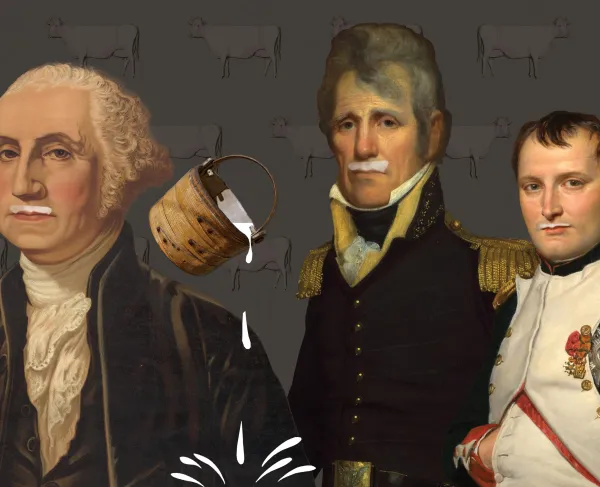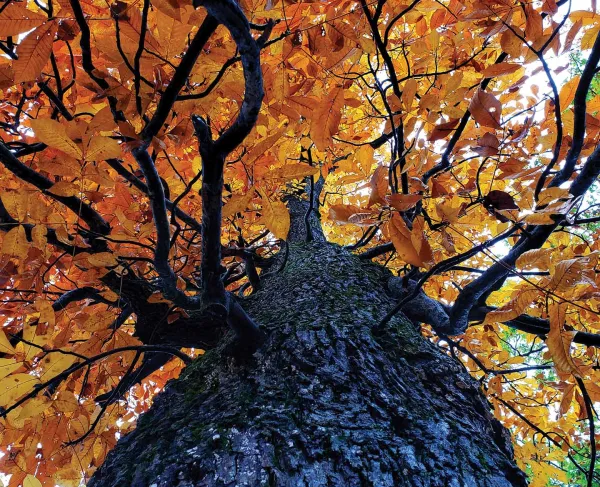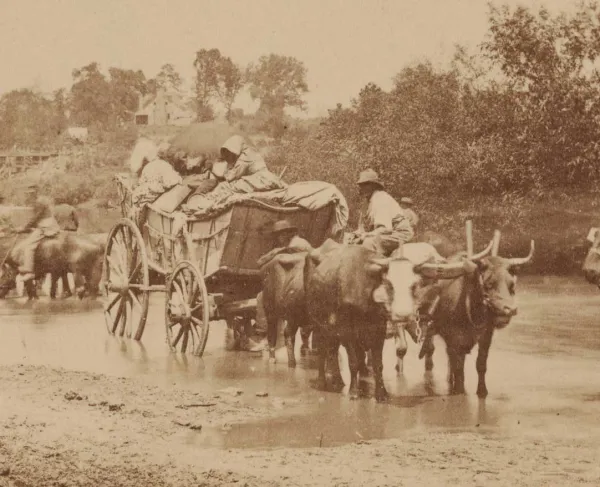Book: Vortex of Hell
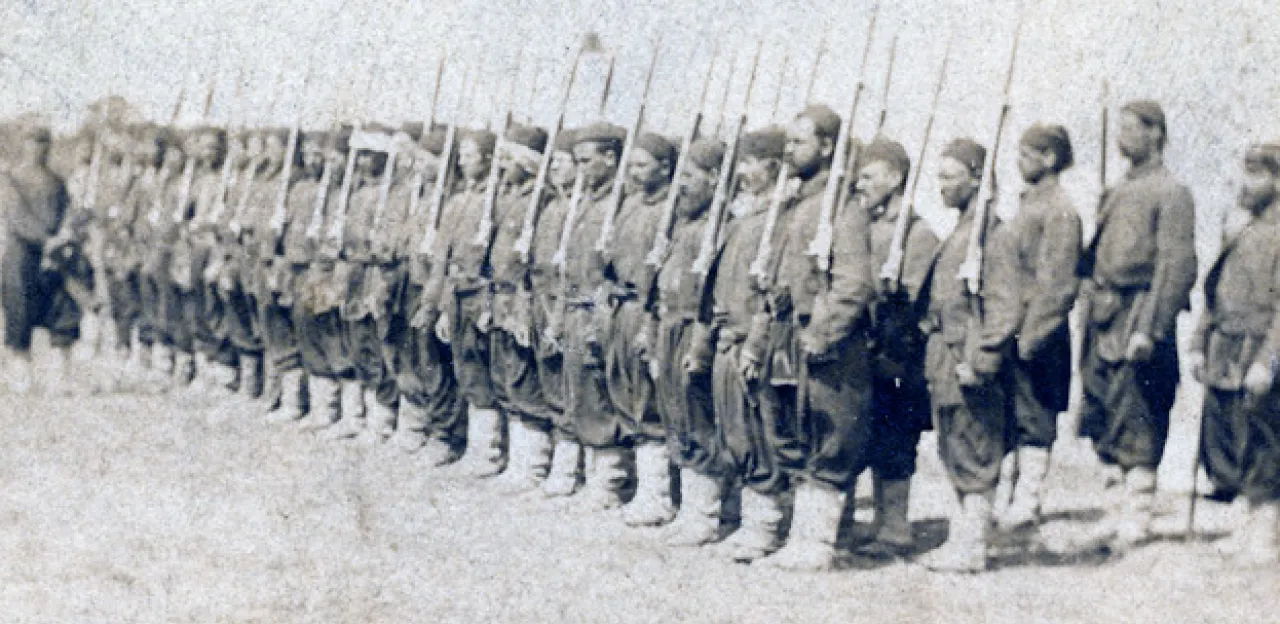
The Civil War Trust had the opportunity to speak with Patrick Schroeder, historian, editor, and publisher of Brian Pohanka's book, Vortex of Hell, a definitive study on the 5th New York Regiment. Despite the loss of Brian back in 2005, Patrick has been able to incorporate text from Brian's work into the answers that you will see below.
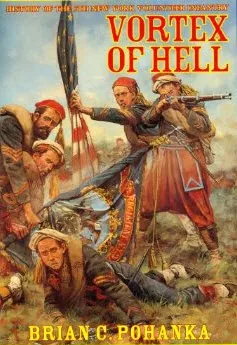
Civil War Trust: Tell us about the genesis of this new book on the 5th New York. What caught your attention about this one regiment?
Brian Pohanka: I can date my nearly life-long interest in the American Civil War to the Centennial of the conflict, when all manner of commemorations, reenactments, and television programs inspired the imagination. From my earliest reading of Civil War history, I accepted the popular belief that those gaudy, colorful, and “bizarre” Zouave outfits quickly went by the wayside after the amateur armies clashed at First Bull Run. I later learned just how historically inaccurate that assumption was; Zouave units were, in fact, well represented through all four years of the war.
This book would never have been written–or even attempted–were it not for a fortuitous encounter in 1975. During a visit to Harper’s Ferry, I saw a group of reenactors outfitted in Zouave attire, and joined them four years later. Given my background as a student of history, soon after joining the Fifth’s “living history” company I was called upon to explain the Zouave story to curious spectators and writing short articles for our newsletter. I began to collect files of information on the history of the original unit, beginning with the Official Records, and sought out all the references I could find in published sources, some of them quite obscure. My employment with Time-Life Books’ Civil War series brought me in contact with museum curators and Zouave collectors, while post-war compilations by the fighting men were available to me on a daily basis.
The most important published source of information on the Duryée Zouaves is the 1879 regimental history, Camp and Field Life of the Fifth New York Volunteer Infantry, by Alfred Davenport [eBook], a veteran of Company G. Upon further examination of his other unpublished work, it became obvious that not only was Private Davenport an inveterate grumbler, but his letters home were filled with scathing critiques and derogatory remarks concerning regimental officers. With many of his fellow veterans still alive, those opinions were understandably excised from the author’s unit history. I realized that good as Davenport’s book was, it was not the last word on the 5th New York, and I began a long-term effort to gather material for a “new” regimental history.
Learn More: Biographies of Soldiers from Duryee's Zouaves
Tell us about the origin of this regiment.
BP: On April 19th, 1861, a group of New York City businessmen and military enthusiasts announced their intention to raise a volunteer regiment for the defense of the Union—“The First Regiment, Advance Guard.” What most distinguished this regiment from the other new formations was the new unit’s commander—Abram Duryée. He was a successful merchant with more than two decades of military service, most recently as commanding officer of the 7th New York State Militia. Although not yet a war veteran, Abram Duryée had extensive experience in quelling civil disturbances, including the bloody Astor Place Riot of 1849, in which he was twice wounded. Highly regarded as a drillmaster, he had authored a manual on street fighting, and was one of the first militiamen to embrace the new Light Infantry tactical system adapted from French texts by Lieutenant Colonel William J. Hardee.
Duryée established Regimental Headquarters at Lafayette Hall, and the unit’s assembly rooms were located at 632 Broadway. By month's end the Advance Guard was approaching regimental strength, though none of the ten companies had yet attained its full complement of 70 to 100 men.
Why did the 5th New York choose to be a Zouave regiment?
BP: In the summer of 1860, the charismatic Captain Elmer E. Ellsworth visited New York on a multi-city tour with his acclaimed United States Zouave Cadets of Chicago. Trained to perfection and sporting Zouave uniforms designed by their dashing commander, the elite 50-man company mesmerized crowds from the Midwest to the Northeast. On July 14th, 1860, Abram Duryée was among an estimated 10,000 spectators who gathered in City Hall Park to witness Ellsworth’s demonstration. Duryée was impressed with the skill and precision of the Zouaves’ drill, although as a tactical purist he judged a number of Ellsworth’s improvisations a little too “theatrical.” He, like the rest of Manhattan, eagerly embraced what had come to be known as “the Zouave Craze,” a phenomenon that found dozens of militia companies adopting colorful Zouave attire within months of the outbreak of Civil War.
What did their uniforms look like?
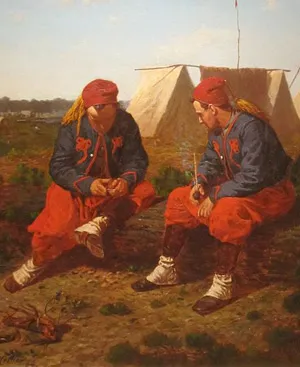
BP: Assembled by Devlin, Hudson & Company, the first version of the Duryée Zouave uniform was more closely based upon the exotic French originals than most of the other units who were eagerly embracing the “Zouave Craze.”
The uniform consisted of a collarless dark blue jacket and shirt trimmed with red, a blue-trimmed red sash, baggy red trousers tucked into white canvas leggings, and as headgear a red fez with a short blue tassel. The fez was worn overtop a huge white flannel havelock, intended to ward off the sun, that fell over the neck and was fastened underneath the chin. Each man also received a flannel turban, to be wrapped around the fez on dress occasions.
Patrick Schroeder: The first uniforms were of rather poor quality. After the initial issue, the unit received uniforms of a better fit and material. Details on the uniforms varied each issue—such as the style of tombeaux (the flower-like decoration on the jacket). The regiment converted to wearing turbans wrapped around their fezzes for dress occasions rather than the havelock first issued. In September 1861 the new fezzes had long yellow tassels instead of the short blue tassels originally issued and the men received leather greaves, or jambières, intended to cover the upper half of the soldiers’ white canvas leggings.
Where did the soldiers of the 5th New York come from?
BP: The Fifth was an urban regiment, raised in Manhattan and drawing the majority of its volunteers from the neighborhoods of America’s most populous city. The surrounding boroughs and nearby Westchester County were represented, while New Jersey and even Connecticut attracted recruits. More than 30 volunteers came down the Hudson from Poughkeepsie, a number of whom would play conspicuous roles in the battles to come.
PS: The more distant parts of Long Island was represented as well with men joining from such places as Glen Cove, Oyster Bay, and Riverhead among others.
What type of men joined the 5th New York?
BP: As was the case with most urban regiments, the enlisted men of Duryée’s regiment hailed from a great variety of ethnic backgrounds and professions. Many were immigrants, or more often the case, the children of immigrants. Typical of these were three young men working as medical orderlies at St. Luke’s Hospital, where they also boarded. Solomon Blodgett and Henry Jones were Englishmen, Andrew Coats a Scotsman. All three left their jobs and signed up together, as did Henry Jones’s 40-year-old father William. A number of British Army veterans joined the Fifth—Andrew Allison, William Chambers, Thomas Taylor, and Abraham Upton were all singled out as potential non-commissioned officers. There were Frenchmen like Leon Olivier who had served in the Army of Napoleon III and Italians like Augusto Amici who had fought alongside Garibaldi. Felix Agnus, a veteran of the French Zouaves, who was employed at Tiffany & Company as a sculptor and engraver, wore his own Zouave uniform when he enlisted. Company G’s 5th Sergeant, William Hoffman, had been born in the French province of Bas Rhin, and was fluent in both French and German. Edward Brunner of Company H was a 29-year-old German revolutionary who had lived in France and Switzerland, and emigrated in 1851 to avoid conscription in the Bavarian military. When war broke out he was making a good living as a tailor. Several Swedes cast their lot with Duryée’s command, including Gustavus Linquist, who gave up his job as chef in a Manhattan restaurant. Cuban-born Louis Matos, a druggist in a Manhattan pharmacy, was one of the unit’s first volunteers.
A majority of the Zouaves, however, could trace their ancestry to the early settlers of Manhattan and vicinity. They were firemen and policemen, artisans and laborers, clerks and college students. Many were imposing physical specimens, and by and large Duryée’s officers found they had better than average material to work with.
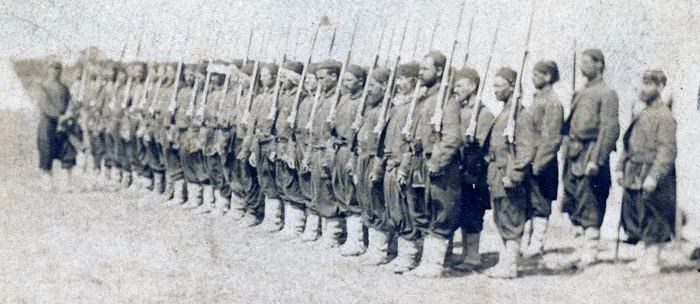
The 5th New York saw much action during the 1862 Peninsula Campaign. How did they perform?
PS: The 5th New York had been trained in the construction of fortifications and the use of artillery while posted in Baltimore where they built and manned a fort on Federal Hill overlooking the harbor and city. Thus, on the Peninsula, the 5th was put to work constructing fortifications and moving artillery into position during the siege of Yorktown. Some of the earthworks still stand today. On May 27, 1862, at the Battle of Hanover Court House, the Zouaves arrived on the field near the conclusion of the fight and received orders to make a charge. General Daniel Butterfield commented that the Fifth was “going in there singing!” The charge met little resistance as most of the Confederate troops had withdrawn. Here the regiment witnessed the horrors of the battlefield and began burying the dead.
The pinnacle of success for the 5th New York came at the Battle of Gaines’ Mill on June 27, 1862. The Zouaves proved themselves a steady and lethal combat force. Being posted at the right center of the Federal line and somewhat in advance of other Federal troops, the men of the Fifth endured the preliminary artillery firing and then went toe to toe with the 1st South Carolina Rifles (Orr’s Rifles) in a stand-up fight in an open field, culminating in a bayonet charge by the New Yorkers on the South Carolinians. The Zouaves killed 81 and wounded 234 of Orr’s men—the largest loss suffered by any Confederate unit that day. The arrival of the rest of Maxcy Gregg’s Confederate Brigade stemmed the Zouaves’ advance. The 5th New York remained in the fight throughout the action defending various positions. The New Yorkers held their own throughout the uneven contest and only withdrew after the Federal lines were breached in other areas of the field. The Zouaves paid a price as well, losing 162 men killed and wounded throughout the course of the engagement. The red-legs performed well, but would be repaid in kind two months later on the Plains of Manassas.
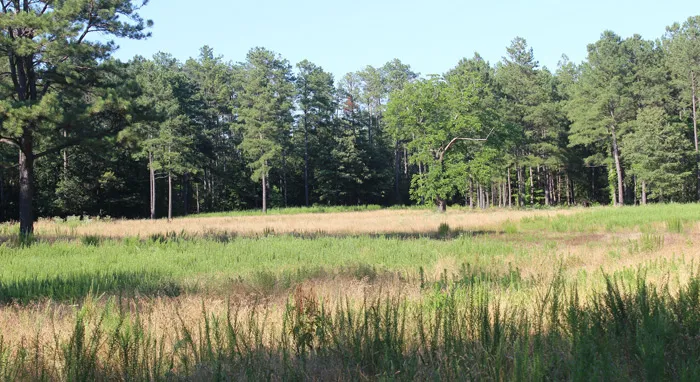
Who are some of your favorite 5th New York soldiers?
BP: Gouverneur Kemble Warren—though not the initial commander, Warren made the reputation and strength of the regiment through drill and discipline after Duryée received promotion out of the regiment.
William D. “Butch” Sapher—By far my favorite 5th New Yorker. Despite his rank, Private “Butch” Saphar was known by nearly every man in the 5th New York as one of the Regiment’s most colorful characters. A veteran of the U.S. Navy, the 21-year-old, Saphar was of medium height but powerfully built, and bedecked with tattoos on his arms, legs, and chest. Captain Judson Kilpatrick, the recruiter who signed him up with the Fifth, was apparently unaware of the fact that Saphar had stabbed a man in a brawl and was wanted by the authorities for “assault & battery with intent to kill.” Alfred Davenport considered him “the life of the regiment,” and “a brave and cool-headed soldier.”
At Second Manassas, a bouncing solid shot plowed into the ground within feet of Saphar. Flaunting regulations by wearing a dilapidated white slouch hat, long hair protruding from the crownless top in what he called his “scalp lock,” Butch doffed his ridiculous chapeau and bowed to the missile, saying, “Good-morning; may you all strike in the same spot.” Even the officers chuckled at Saphar’s antics.
During the Battle of Antietam, as Warren’s men rested on their arms, chatting nervously, Saphar strolled over to his friend Frank Clark of the 10th New York, inquiring for some tobacco to chew. Clark dared Saphar to ask General Burnside, who was riding past the brigade. Butch brazenly walked up to the General, saluted, and before the Zouave officers could intervene, asked if he happened to have any tobacco. Burnside readily took out a plug, handing it to Saphar who cut “an enormous chew,” replying, “Thank you, Gen’ral.” Burnside smiled, and said, “Never mind; keep it. You need it, and I can get more.” The private returned to his place in the ranks sporting an impish grin under the silent glares of his dumbfounded superiors.
After the war, a Grand Army of the Republic encampment show was further enlivened by the presence of William D. “Butch” Saphar; the Old Fifth’s most notorious enlisted man was now a successful actor-comedian and author of a humorous burlesque called “The German Volunteer.”
Alfred Davenport—though an inveterate grumbler who disdained the officers of the regiment, it was always entertaining to read his slandering of an officer and the derogatory nicknames he would give them. Davenport contributed much to the preservation of the history of the regiment.
The 5th New York was decimated at the Battle of Second Manassas. What happened to the 5th on August 30, 1862?
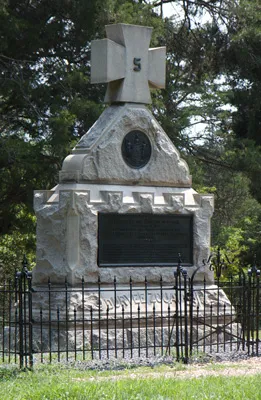
PS: Warren’s Brigade consisting of the 5th and 10th New York were some of the units from Fitz-John Porter’s Army of the Potomac’s Fifth Corps to arrive as reinforcements for General John Pope, who at this point believed he had “Stonewall” Jackson’s men on the run and was oblivious to the arrival of Confederate General James Longstreet’s arrival with 30,000 men on his left flank. The Brigade was virtually alone supporting Lieutenant Charles Hazlett’s Battery D of the 5th U. S. Artillery as it fired on Jackson’s position along the unfinished railroad to the northwest. Six companies of the 10th New York were deployed as skirmishers in the woods to the west (to the left of the 5th), but when Longstreet launched his overwhelming assault, those skirmishers were quickly driven back on the 5th, preventing the remainder of Warren’s command from firing until the attack was close upon them. Overwhelmed in the front and on the flank, the 5th stood perhaps ten minutes enduring the fire of Hood’s Confederate brigade—at this time consisting of the 1st, 4th, 5th Texas, the 18th Georgia, and Hampton’s Legion. Andrew Coats of the 5th later said that on that day the regiment stood on the very “Vortex of Hell.” The 5th suffered 330 casualties, with 120 men killed or mortally wounded—the most sustained by any infantry regiment in a single battle during the war. Through a heroic effort the Zouaves saved their colors from capture and James Webb, ironically nicknamed “Chicken,” showed great courage and bravery under fire in reaching Hazlett’s battery to warn them of the assault. The battery made its escape, Webb was slightly wounded and later was awarded the Medal of Honor. The regiments’ sacrifice gained a precious few minutes for the Federals to realize that Longstreet Corps was on the field and make a few preparations to meet the unexpected onslaught, but at a terrible price.
Given their great loss at Second Manassas it’s amazing to think that this regiment continued to fight on in the war.
BP: The effectiveness of any volunteer regiment depended in large part on the unit’s ability to maintain a continued influx of new recruits. The 5th New York was no exception. By the end of July, they had managed to sign up 27 men at a recruiting station in Manhattan, a less than impressive tally. Major Harmon Hull threw himself into the recruitment efforts with a passion, emphasizing the heroic record and colorful uniform of the Zouaves, and literally drumming up support with the aid of his musicians. He also drew upon the regiment’s longtime financial supporters, obtaining cash bonuses, or bounties, for the new volunteers. The efforts paid off, with as many as 20 recruits signing up on a daily basis.
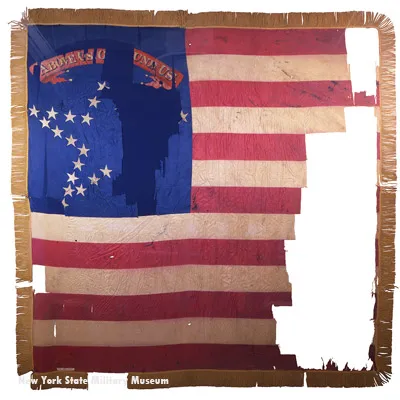
In the second week of August, a large contingent of 5th New York recruits joined other volunteers aboard a steamer bound for Newport News and the Virginia Peninsula. On their arrival, the contrast between these “fresh fish” and the filthy, unshaven veterans caused Alfred Davenport to reflect, “The appearance of the men did not tend to raise their spirits much, as we were all in rags and dirt.”
PS: The arrival of these new recruits more than doubled the size of the regiment allowing the unit to continue. There were other men that survived the slaughter at Second Manassas due to being sick or wounded in a hospital, there were men away from the regiment on furlough or assigned to recruiting duty, and others were on detached service elsewhere in the army. Many of these men eventually returned to the unit.
All these new recruits had enlisted for a three-year term, but the 5th New York was a two-year regiment. When the regiment returned to New York to muster out in May 1863, these three-year men were consolidated into the 146th New York Infantry.
How about battlefield land where the 5th New York fought?
PS: The land where the 5th New York fought and encountered the “Vortex of Hell” is protected by the National Park Service. Their monument at the end of New York Avenue tells of their sacrifice on August 30th, 1862. Recently the Civil War Trust secured some of the ground over-which Confederate forces launched the advance against the 5th New York. At Gaines’ Mill, the land where the unit fought is in private hands and not accessible by the public. Hopefully in the future, if this land comes up for sale, the Civil War Trust can take action to preserve it for future generations. The reenactment unit contributed money to the monument erected to commemorate the engagement at Big Bethel, where the 5th New York suffered more casualties than any other unit engaged in the first battle of the Civil War on June 10, 1861. These are the three most significant engagements for Duryée’s Zouaves. The regiment also saw action at Hanover Court House, Shepherdstown, Frederickburg, and Chancellorsville. The fortifications the regiment built and manned during the siege of Yorktown still exist and are protected by the National Park Service.
Are there groups out there today helping to keep the memory of the 5th New York alive today?
PS: The original men that formed the re-enactment unit for the 5th New York, Duryée’s Zouaves, back in the early 1970’s is now known as Company A, a second group based in California is Company C, and a third contingent in the Poughkeepsie to New York City area portrays Company D
Brian C. Pohanka was a military historian who focused on the American Civil War and the Battle of Little Big Horn. His film and television work included serving as an historical advisor and military coordinator for Glory, Gettysburg, Gods and Generals, and Cold Mountain, and Series Consultant for A&E/History Channel’s Civil War Journal. Pohanka was a senior researcher, writer and advisor on all of the Time-Life Books Civil War projects, the author of Distant Thunder: A Photographic Essay on the Civil War; The Civil War: An Aerial Portrait; Landscapes of the Civil War: Don Troiani’s Civil War Art; and co-author of Mapping the Civil War; Myles Keogh: An Irish Dragoon in the 7th Cavalry; The Place Where Custer Fell; and editor of A Summer on the Plains With Custer’s 7th Cavalry. His articles appeared in numerous history publications. He was active in the cause of Civil War Battlefield preservation, and Civil War living history as Captain of Company A, 5th New York Volunteer Infantry, Duryee’s Zouaves. Pohanka passed away in 2005.
Patrick Schroeder, Civil War author and historian, is the editor and publisher of Brian Pohanka's book, Vortex of Hell. Patrick worked as a seasonal living history interpreter at Appomattox Court House National Historical Park while earning a B.S. in Historical Park Administration from Shepherd College. In 1993, he wrote Thirty Myths About Lee’s Surrender, which is currently in its twelfth printing. His thesis for his M.A. in Civil War History from Virginia Tech formed his fourth book, We Came To Fight: The History of the 5th New York Veteran Volunteer Infantry, Duryee’s Zouaves (1863-1865). Patrick has written, edited and/or contributed to more than twenty-five Civil War titles. Patrick resides in Lynchburg, VA, has served as the Historian at Appomattox Court House National Historical Park since 2002. In an effort to protect sites relevant to the Appomattox Campaign, Patrick has set up the “Appomattox Fund” with the Civil War Trust, to save land important to the climatic events of April 1865.
Related Battles
6,800
8,700
14,462
7,387
182
300
